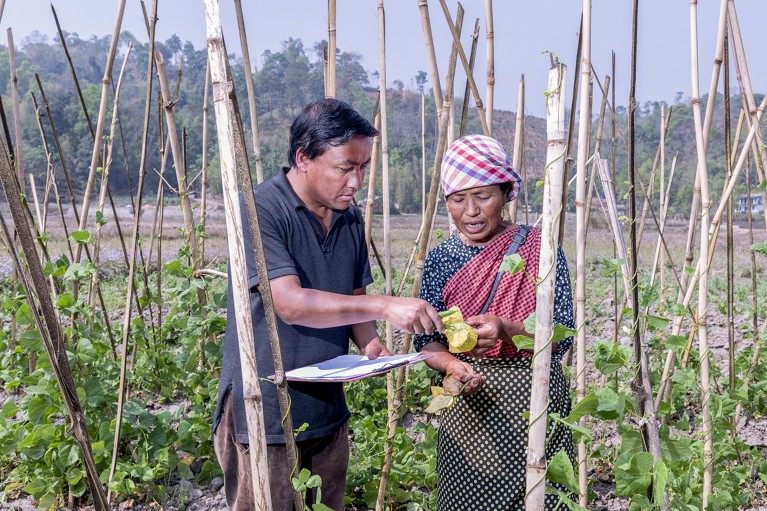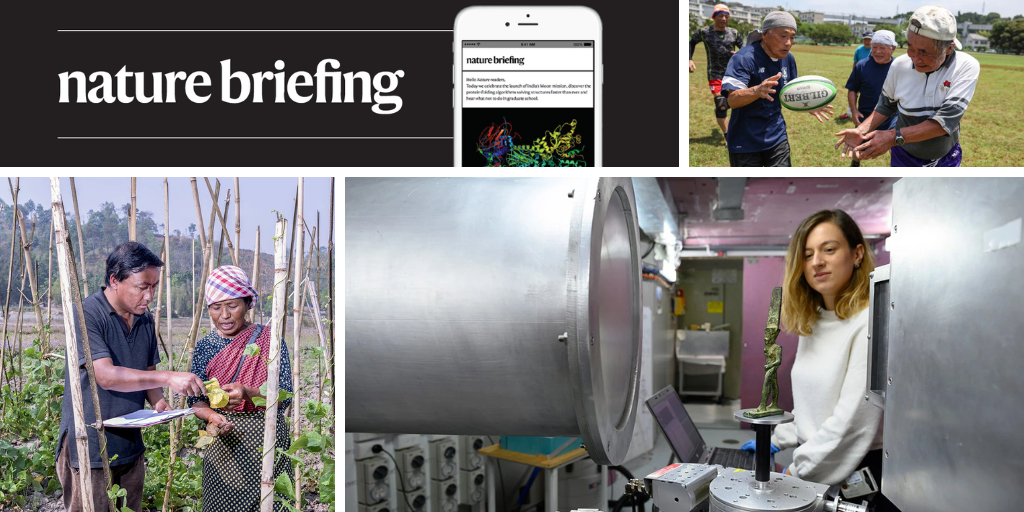You have full access to this article via your institution.
Hello Nature readers, would you like to get this Briefing in your inbox free every day? Sign up here.

The ageing of many tissues accelerates at around age 50, according to an analysis of tissues in people ranging from teenagers to individuals in their sixties.Credit: Karen Haibara/AFP/Getty
The ageing of human tissues accelerates at around 50 years old, but some organs pick up more speed than others. In particular, researchers found that blood vessels age more quickly than other organs, thanks to dramatic shifts in protein levels. The team found that one of the proteins produced in the aorta — the body’s main artery — triggered signs of accelerated ageing when administered to mice. Ageing researcher and study co-author Guanghui Liu speculates that blood vessels act as a conduit, carrying molecules that promote ageing to remote destinations throughout the body.
More postdoctoral researchers secured access to neutron-beam instruments when an Australian facility made their application process anonymous. Success rates for the early career researchers rose from 61% to 78%, while those for more-experienced researchers dropped from 61% to 50%. The results of the intervention are the latest example of how introducing blind review, in which the identities of the applicants are not revealed, can reduce systemic biases. “If the idea is original and brilliant, it shouldn’t matter who wrote it,” says theoretical astrophysicist Priyamvada Natarajan. “Everyone should have a fair shot.”
Reference: Research Evaluation paper
Neanderthals (Homo neanderthalensis) might’ve enjoyed an unusual culinary delight: maggots. The peculiar dietary choice could explain why the bones of some Neanderthals (Homo neanderthalensis) contain an extreme level of a certain isotope of nitrogen. Such levels are normally only seen in animals that eat huge quantities of meat. A new study suggests that our ancestors might’ve eaten putrefied meats — and the maggots feasting on them. This nitrogen isotope would have accumulated in the maggots as they chowed down on the rotting flesh, then passed on to the hungry Neanderthals.
Reference: Science Advances paper
In light of grant terminations and threats of cancelled visas under the administration of US President Donald Trump, many international scientists — particularly those at the start of their careers — are considering leaving the United States. “I wanted to stay here, and I wanted to leverage the fact that these great schools can provide big opportunities to do really good science,” says a stem-cell biologist who asked to remain anonymous because he fears his immigration status could be terminated. Now, his best option is to leave for Europe, he says.
Features & opinion
In his book Destroyer of Worlds, physicist Frank Close weaves together the strands of early-twentieth-century physics that revealed the secrets of the atom, how quickly those discoveries were weaponized and how nuclear power’s potential military uses still loom over modern society. Authoritative but accessible, “the book carefully tracks the spread of the implications of nuclear energy until its inevitable end”, says science writer Ann Finkbeiner in her review. “If a scientific history can be a page-turner, this one is.”
The development of sustainable and resilient systems to grow fresh food on the Moon could also help to tackle challenges on Earth, say nutritional physiologists Nobuyo Tsuboyama-Kasaoka and Takeshi Nikawa. Foods packaged for space can be ideal disaster-relief supplies, and alternative protein sources such as crickets could feed both astronauts and growing populations on Earth.
Where I work

Bhogtoram Mawroh is a consultant at the North East Society for Agroecology Support in Shillong, India.Credit: Sayan Hazra for Nature
Geographer Bhogtoram Mawroh works with Indigenous People in Meghalaya, India, to adapt agriculture to climate change. “Over the past few years in Meghalaya, we’ve experienced record rainfall, rising temperatures and extreme heat waves,” he says. “The Indian government is undertaking a big push to encourage regenerative farming, but its programme focuses on modern farming practices that stay in one place.” Mawroh works to secure funding for Khasi, Garo and Karbi Indigenous People, whose farming system moves between different areas across the mountains each year. (Nature | 3 min read)
On Friday, Leif Penguinson was marvelling at the beauty of the Huilo-Huilo Biological Reserve in southern Chile. Did you find the penguin? When you’re ready, here’s the answer.
This newsletter is always evolving — tell us what you think! Please send your feedback to [email protected].
Thanks for reading,
Jacob Smith, associate editor, Nature Briefing
With contributions by Smriti Mallapaty
• Nature Briefing: Careers — insights, advice and award-winning journalism to help you optimize your working life
• Nature Briefing: Microbiology — the most abundant living entities on our planet — microorganisms — and the role they play in health, the environment and food systems
• Nature Briefing: Anthropocene — climate change, biodiversity, sustainability and geoengineering
• Nature Briefing: AI & Robotics — 100% written by humans, of course
• Nature Briefing: Cancer — a weekly newsletter written with cancer researchers in mind
• Nature Briefing: Translational Research — covers biotechnology, drug discovery and pharma


